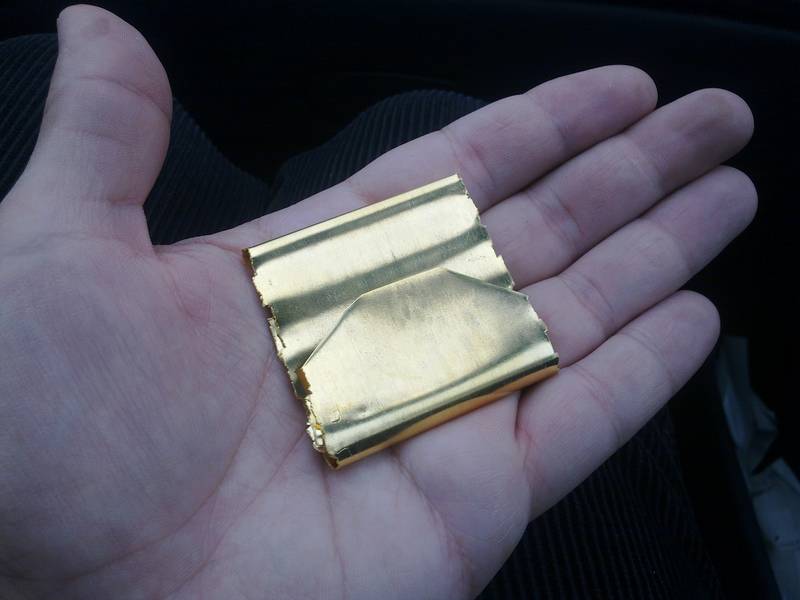Refined gold sheet on my hand
This is beautiful refined gold sheet on my hand.
Gold exchange and processing at a modern metal-refining facility involves several steps, starting from the raw material (gold bars or scrap) received by the refinery to delivering back purified gold bullion with an assay certificate that guarantees its purity level. Here’s how it typically works:
Receiving Gold: The process begins when a client brings in their gold, which could be from trade (like trading on commodity markets), scrap metal dealers selling old jewelry or industrial waste containing gold, or directly from mines if the refinery specializes in ore processing.
Inspection and Assay: The incoming material is inspected for its quantity and quality (purity). If it’s a large shipment of bullion bars, they’re weighed using precision scales to determine their total gold content by weight. For scrap metal or mine tailings, the refinery might use X-ray fluorescence spectroscopy (XRF) for initial quality assessment and then perform fire assay tests on a sample basis for precise purity determination.
Melting: The gold is melted in furnaces designed to handle large volumes of metal without losing any precious content due to evaporation or oxidization.
Refining Process: Depending upon the impurities present, different refining methods are used:
For low-grade scrap containing a significant amount of silver and other base metals, electrolytic refinement is common where gold anodes (positive terminals) are submerged in an acidic solution with platinum cathodes. The purest form of the metal collects on these cathodes as they act like magnets for impurities to dissolve into the liquid medium instead.
For high-grade scrap or bullion, a process called Miller Chlorination is often used where gold chloride (AuCl3) reacts with sodium metal in an atmosphere of hydrogen gas producing pure 24k gold and releasing byproducts like NaCl and Hg.
Casting: Once refined, the molten purified gold is cast into bars or ingots according to industry standards (like London Good Delivery). These standardized forms facilitate easier trading on global markets due to their uniformity in weight, purity, and dimensions.
Assay & Hallmarking: Each batch of refined gold undergoes an assay test confirming its fineness or purity level (usually 995-1000 parts per thousand). A hallmark is then applied to certify the gold’s authenticity, purity and origin.
Payment & Delivery: Based on agreed terms with clients - typically spot market prices for their submitted material minus a refinery fee covering processing costs plus profit margin – payments are made either by credit transfer or direct bank deposit into client accounts after successful completion of the process. The now-refined gold bars/ingots, certified and hallmarked, are then shipped back to clients worldwide for their further use in jewelry making, electronics manufacturing etc., as per original trade agreements.
This system ensures that while refineries make a profit from processing raw materials into valuable commodities (refined gold), they also provide necessary services ensuring the purity and quality standards required by global markets for precious metals like gold.
